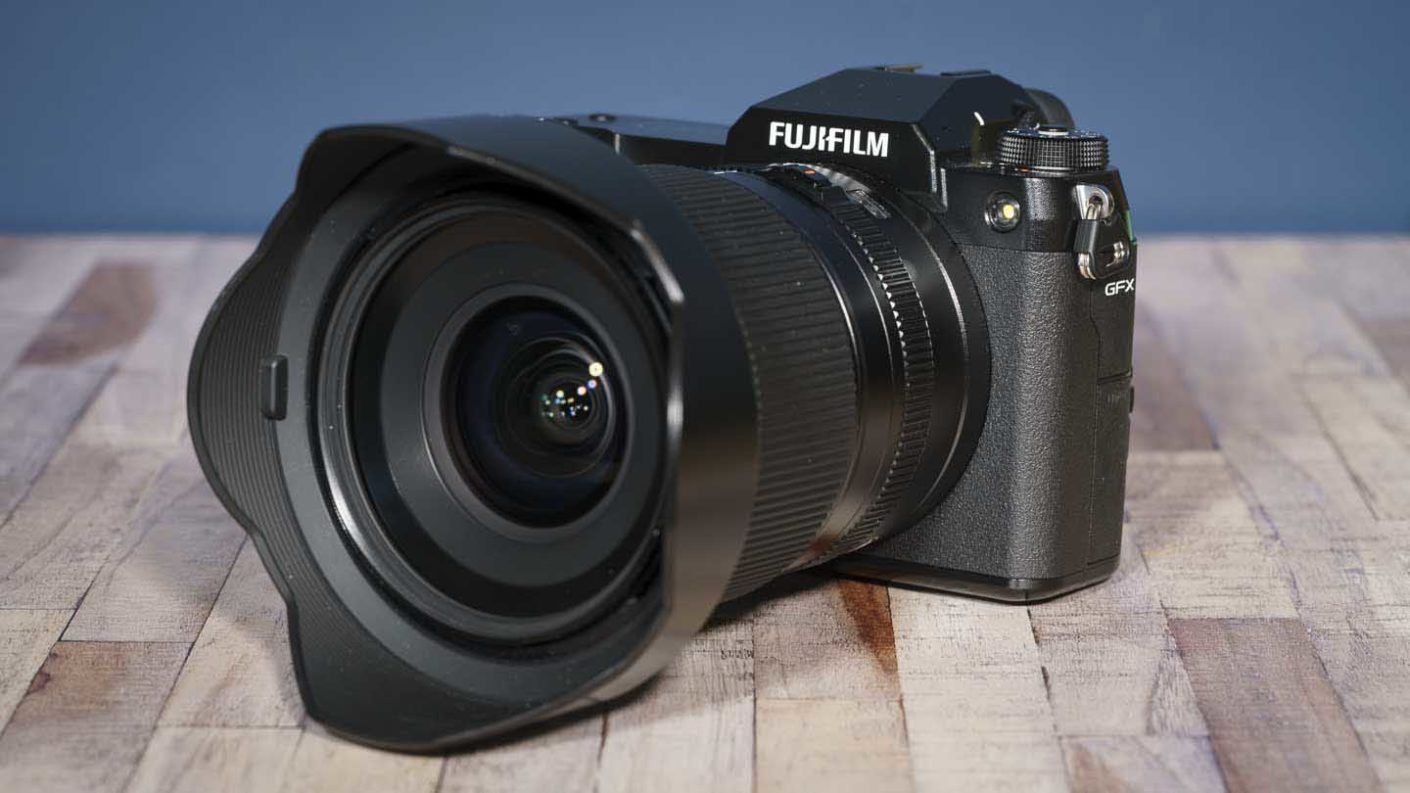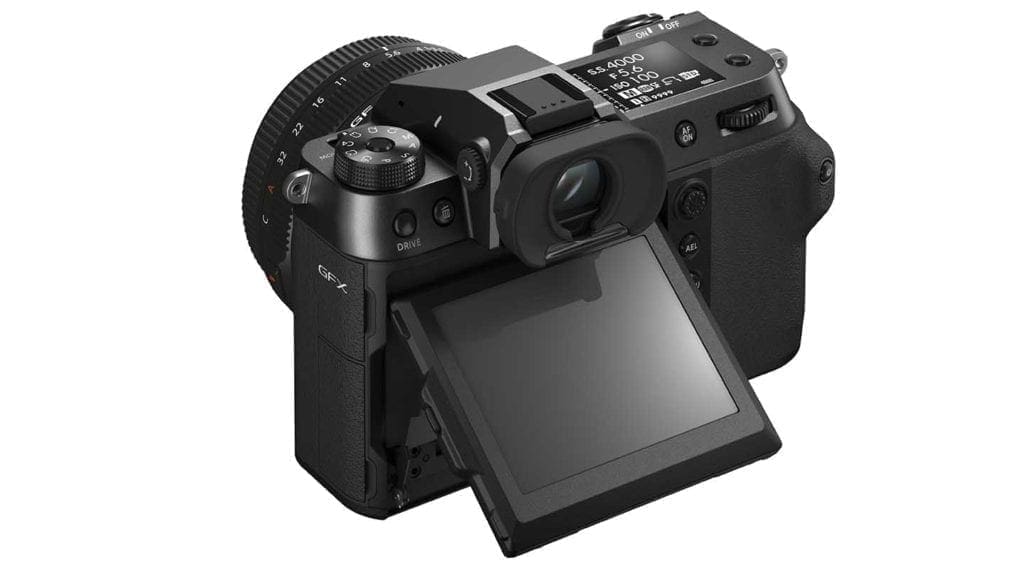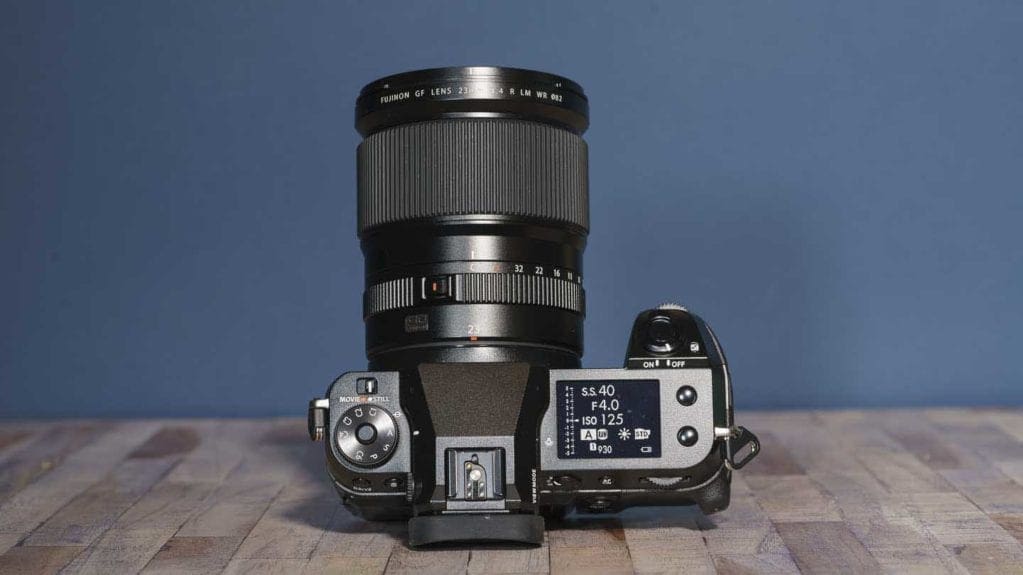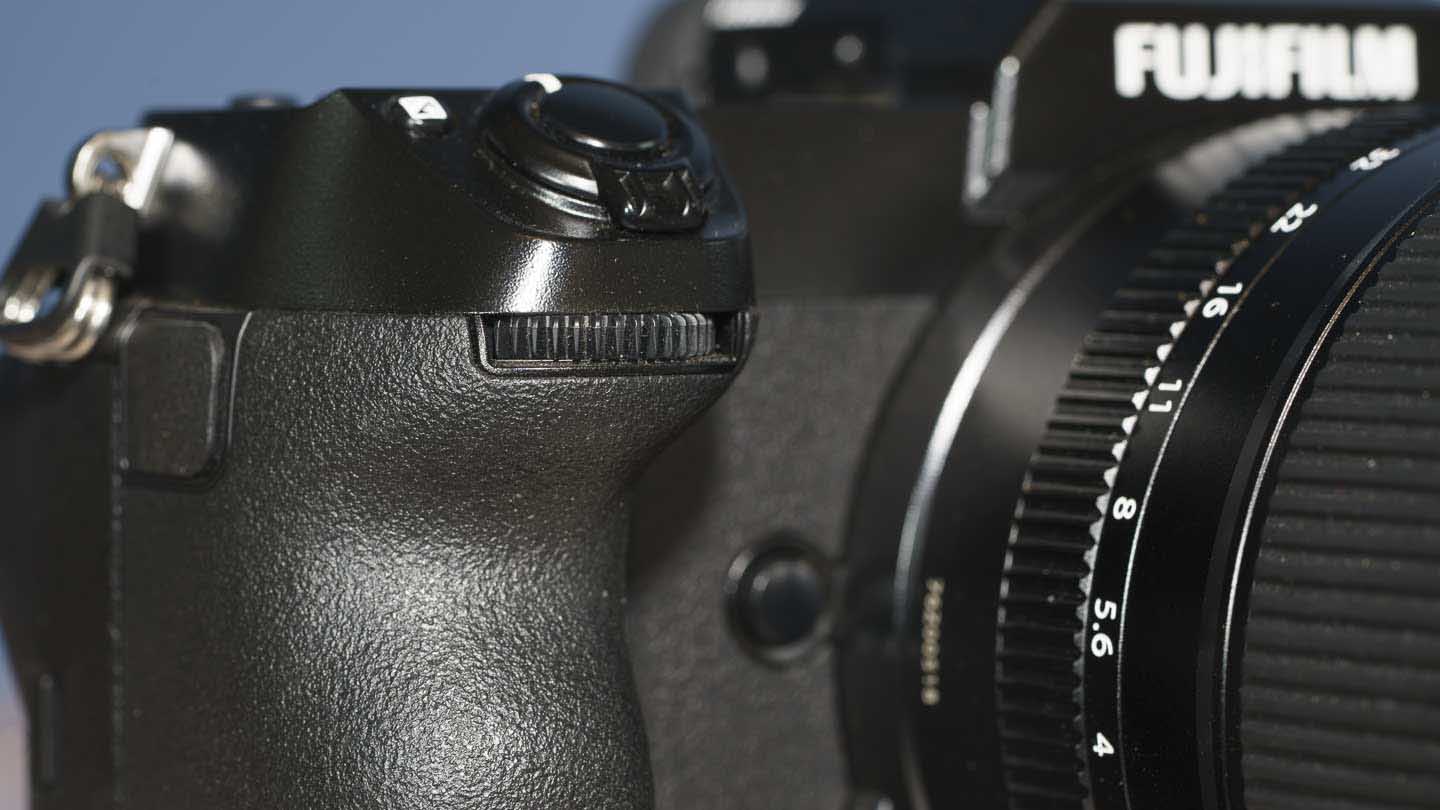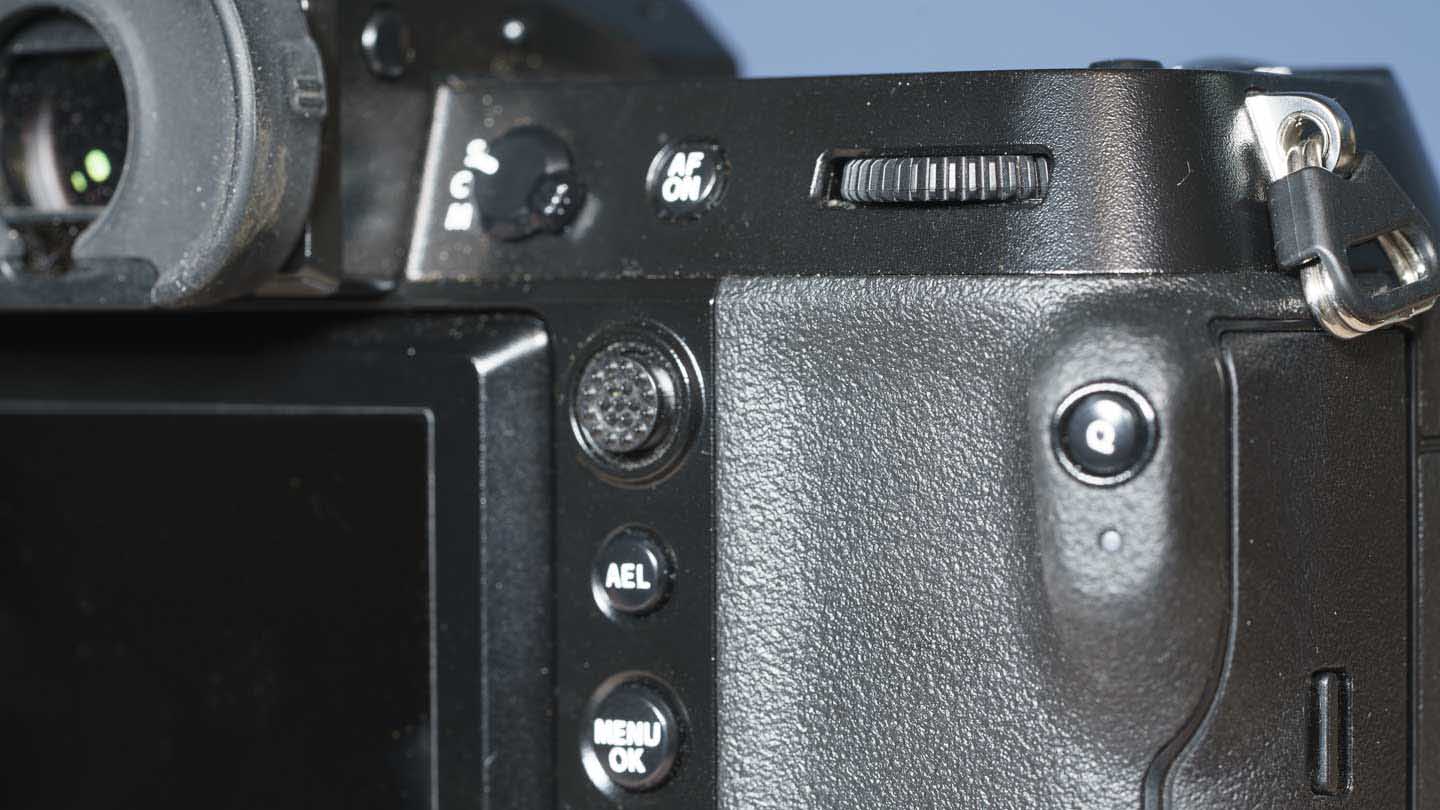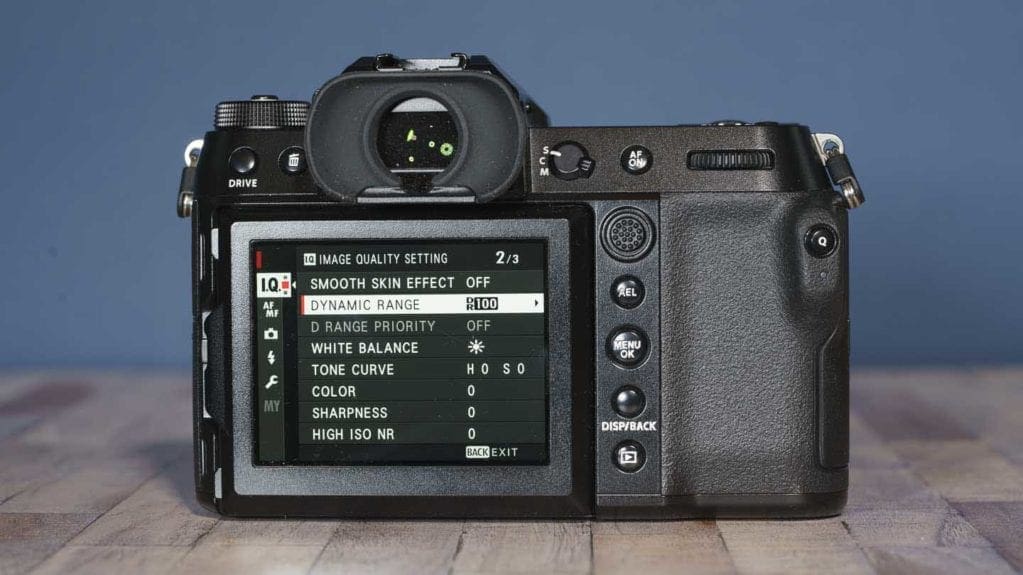Fujifilm has blended the GFX50S and GFX100 to create the GFX100S. As a result, the GFX100S doesn’t have the GFX50S’s interchangeable viewfinder nor its sensitivity (ISO) and shutter speed dials. Instead, it has a mode dial on the left of its top plate and it has front and rear dials to control the exposure settings.
A black and white screen on the right of the top plate shows all the key shooting information – more on this later.
I find the shape of the GFX100S fits my hand very nicely so it feels comfortable to use either with the camera held to my eye or with the screen tilted for use. It also feels well-made and durable with all of the controls responding promptly to use.
Fujifilm says that the shutter lag has been reduced from 0.09 seconds with the GFX100 to 0.07 seconds, and the response time always seems good. However, the shutter button has a ‘squidgy’ feel and the mechanism feels/sounds like the exposure is longer than the set time. It’s a little quirk that you get used to and it’s connected with the dampening of the shutter which makes it quiet and less prone to creating vibration.
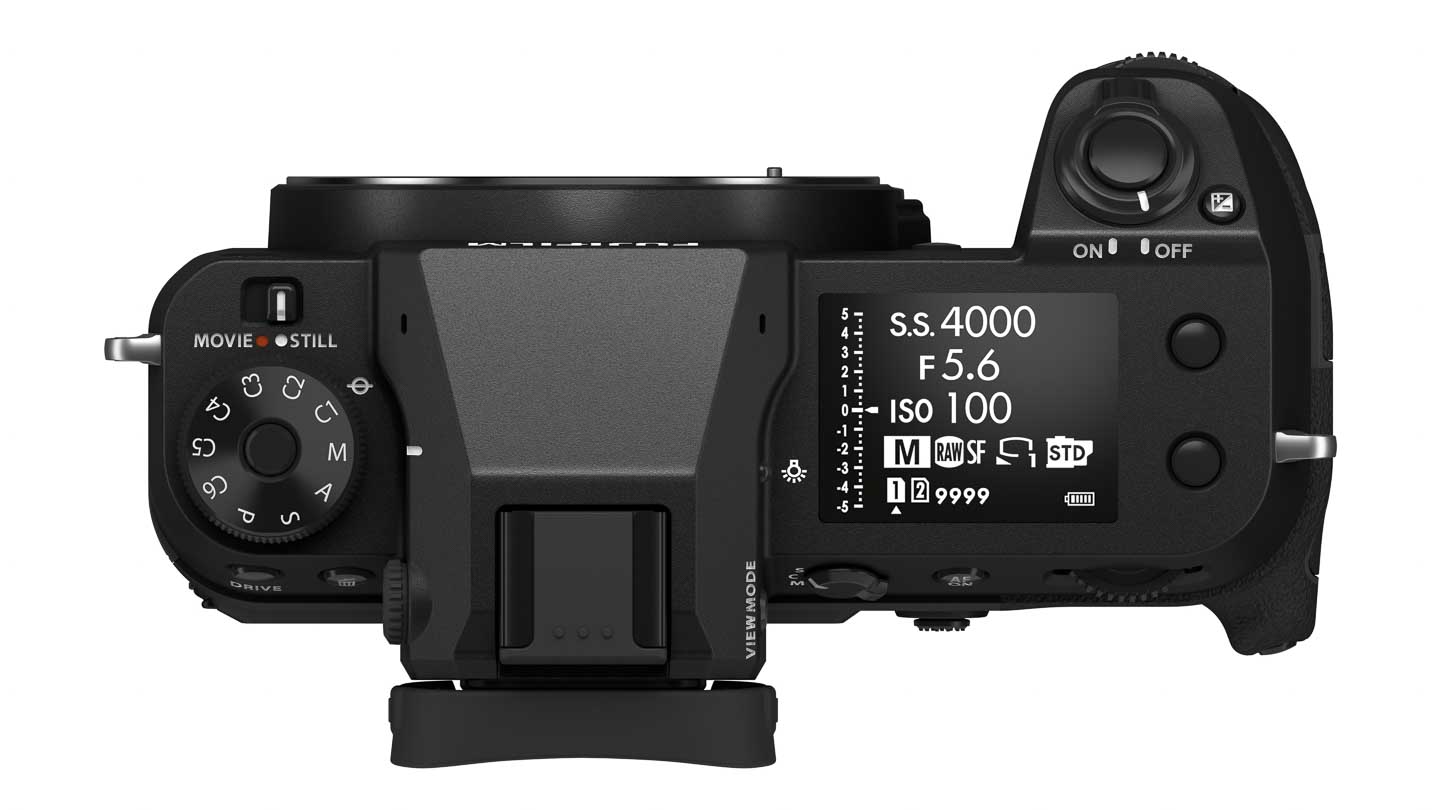
I’m a little disappointed by the lack of traditional exposure controls on the GFX 100S’s body, but it may give the camera more appeal to photographers who aren’t used to Fujifilm’s X-series camera line-up. Also, alongside the usual PASM options, the mode dial has six programmable custom options, which means that anyone who routinely shoots the same subject or in similar conditions can select the settings they need very quickly.
Downsized
It’s good to see that Fujifilm has rearranged the battery’s location in comparison with the GFX100, and the GFX100S is a single-gripped camera. This helps to keep its size down to a modest 150 x 104 x 44mm. Fujifilm has also plumped for the NP-W235 battery that comes with the Fujifilm X-T4 rather than the larger NP-T125 that comes with other GFX cameras.
For comparison, the full-frame mirrorless Canon EOS R5 measures 135.8 x 97.5 x 88mm and the Canon EOS 5D Mark IV, which is a full-frame DSLR, measures 150.7 x 116.4 x 75.9mm. So the Fuji GFX100S could easily be mistaken for a full-frame camera rather than a medium format model with a 1.7x larger sensor.
The lenses, however, are on the substantial side.
Enabling those neat camera proportions has required Fujifilm to do some downsizing. It’s worked on the shutter mechanism to reduce its size and applied the lessons learned when shrinking the IBIS unit in the Fujifilm X-T4.
Control layout
On the back of the GFX100S, there’s a redesigned mini joystick for setting the AF point and navigating the menu. It’s joined by a small selection of buttons and a switch for changing the focus mode.
I find this new 8-direction joystick very nice to use. My thumb seems to find it instinctively and the nobbled surfaces prevents it from slipping.
I was a little concerned to see that the Q button to access the Quick Menu is on the ridge next to the thumbrest. It reminds me of the Fuji X-T30, which is a great little camera apart from the poorly-placed Q button which is prone to accidental pressing.

However, in two weeks of shooting with the GFX100S, I didn’t once press the Q button accidentally. A few times on the first day of shooting, I looked blankly at the back of the camera trying to spot the Q button, before realising that it was hidden by my thumb.
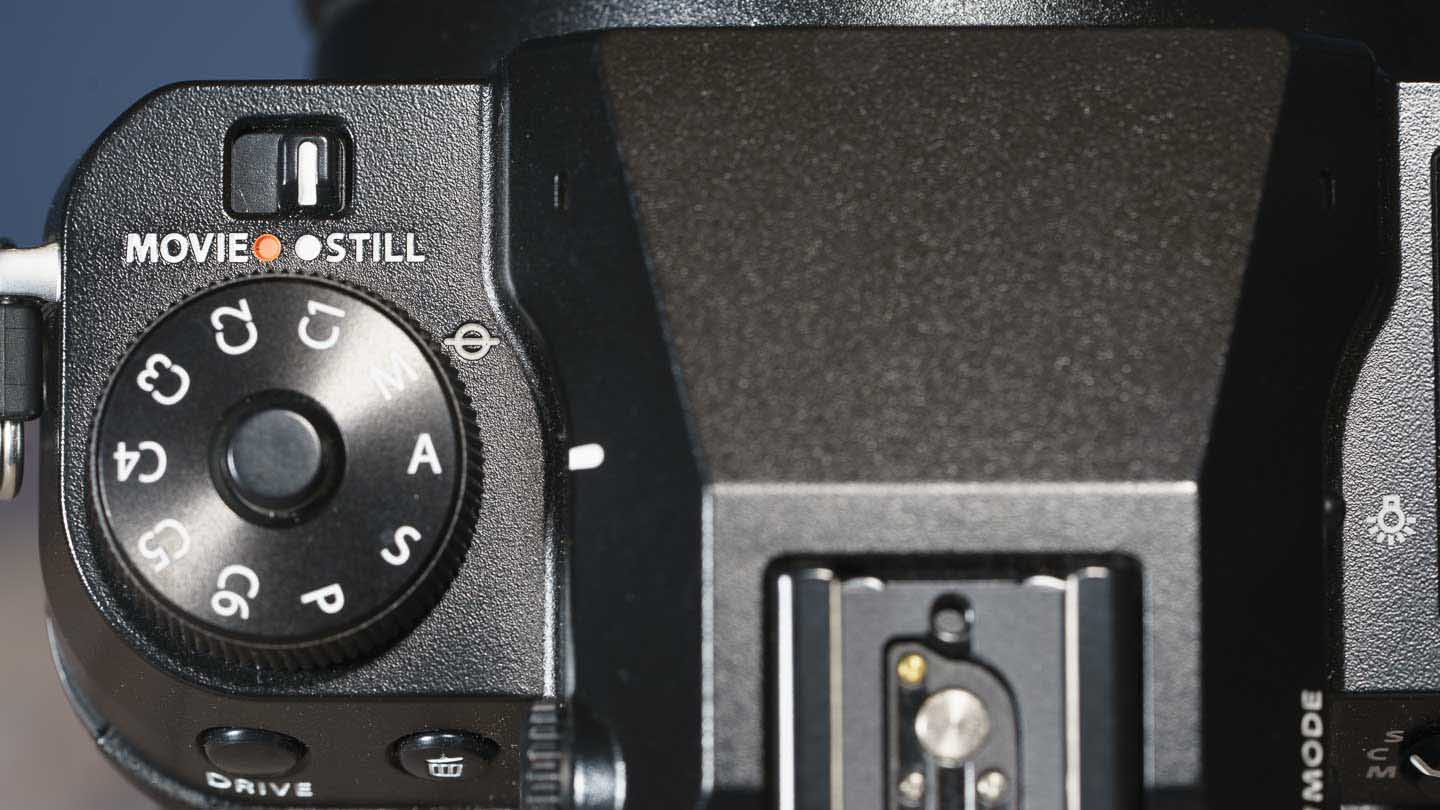
Next to the mode dial, the GFX100S has a switch that photographers can use to change quickly between still and movie mode. I like this arrangement as it’s faster to flick a switch than rotate the mode dial to video mode and then have to set the exposure mode via the menu.
I also like that the Quick Menu options change depending upon which position the switch is in.
There are two control dials on the Fujifilm GFX100S, one on the back of the camera above the thumb rest and the other on the front at the top of the well-shaped grip. This means that you can adjust the camera settings quickly. However, exposure compensation is set by pressing the dedicated button next to the shutter release and rotating the dial. I find this button quite hard to locate while I’m looking in the GFX100S viewfinder, but thankfully, it’s possible to customise a dial to adjust it directly.
Viewfinder and Dual Screens
While the GFX50S has a removable viewfinder, the unit on the GFX100S is fixed. It’s a 0.5-inch 3.69million-dot device that offers 0.77x magnification and has a refresh rate of up to 85fps.
Although there are higher resolution viewfinders, the GFX100 has a 0.5-inch 5.76million-dots EVF for example, a 3.69million-dot unit is still very good and it can display a very clear image. The 0.5-inch size is about optimum, it’s large enough to provide a nice view but it’s not so large that you have to swivel your eyeball around to see the corners of the frame.
On the back of the Fuji GFX100S, there’s a 3.2-inch 2.36-million-dot LCD screen while, as mentioned earlier, there’s a 1.8-inch sub LCD monitor on the top plate.
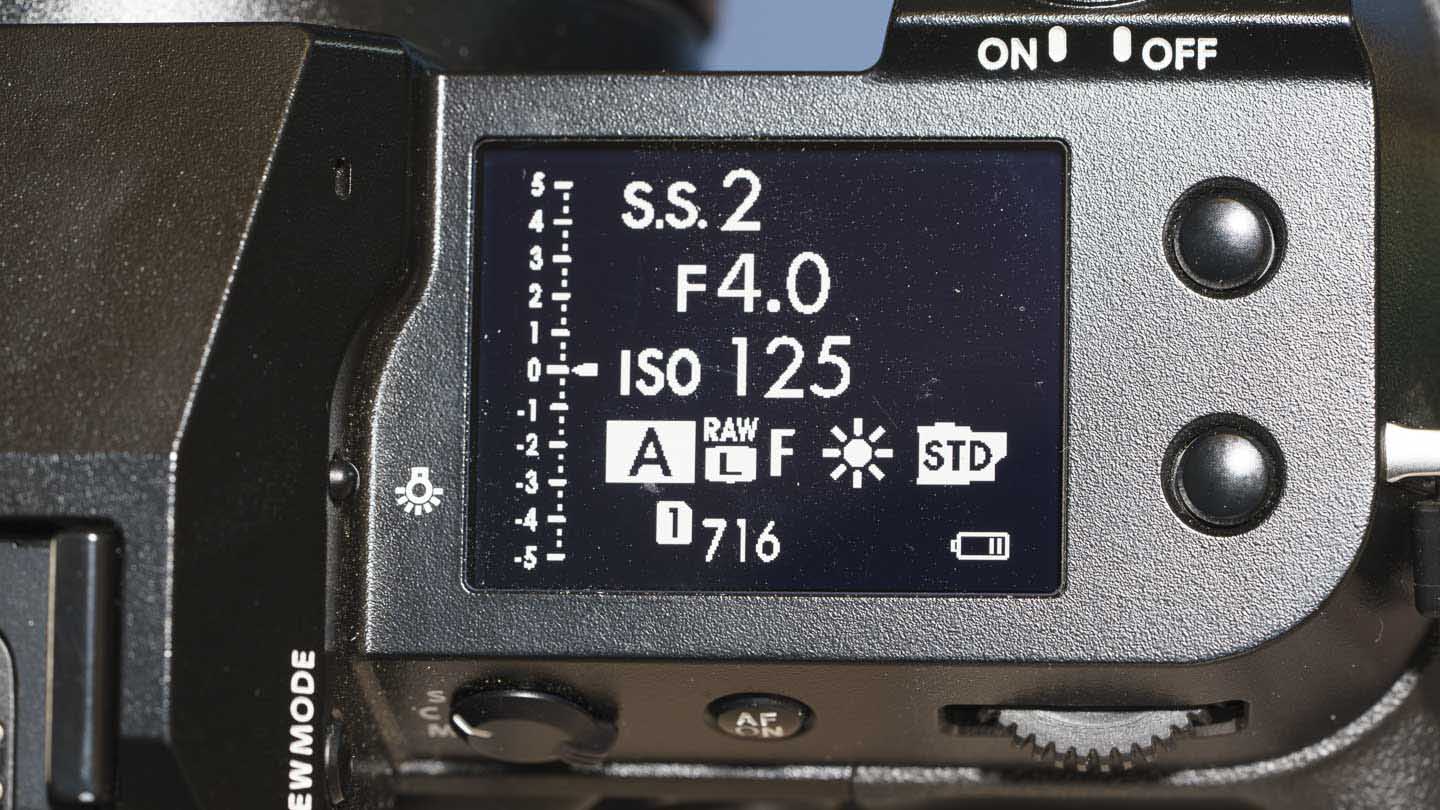
The smaller of the two screens can be customised to show key setting information such as the shutter speed, aperture, ISO sensitivity and exposure compensation as well as some other status information, or the available capacity of the memory card.
While the 1.8-inch screen is fixed, the 3.2-inch screen on the back of the camera can be tilted in three directions (90° up, 45° down, and 60° right) to aid composing landscape or portrait orientation images when shooting above or below head-height.
This has a robust feel and provides a clear view in all but bright sunlight when the viewfinder is preferable.
